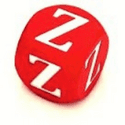Hello everyone!, we're going to discuss how Optical Character Recognition (OCR) can boost your app's performance by recognizing and extracting text from images.
The OCR model is a powerful text recognition tool capable of identifying text from various digital formats, such as documents, invoices, forms, ID cards, shipping container numbers, or vehicle number plates.
It operates primarily using a diet classifier and CRF entity extractor to gather necessary information. Zoho Creator, the platform we are using, offers two OCR options: pre-built and custom.
Hello everyone!, we're going to discuss how Optical Character Recognition (OCR) can boost your app's performance by recognizing and extracting text from images.
The OCR model is a powerful text recognition tool capable of identifying text from various digital formats, such as documents, invoices, forms, ID cards, shipping container numbers, or vehicle number plates.
It operates primarily using a diet classifier and CRF entity extractor to gather necessary information. Zoho Creator, the platform we are using, offers two OCR options: pre-built and custom.
Pre-built versus Custom OCR Models
The pre-built OCR model extracts all the text from an image, while the custom OCR model allows you to train the model with specific data to scan and extract particular text from an image.
Building a Custom OCR Model
Training the Model
Testing and Deploying the Model
Seeing the Custom OCR Model in Action
Now, let's see how this custom OCR model performs in practice. Upon accessing the app and uploading an invoice image, the tagged text is extracted and displayed in the specified fields.
